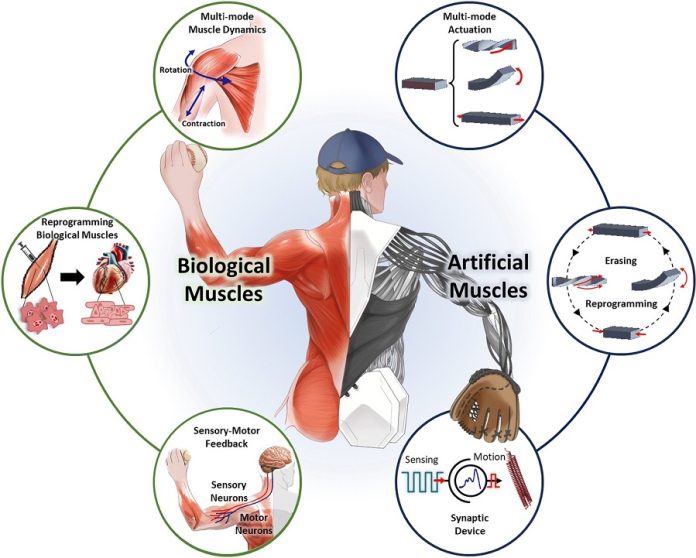
Forget the cold, metal robots of science fiction. At Georgia Tech, scientists are building something very different—machines that move, feel, and even learn like humans.
Led by Professor Hong Yeo, the research team is creating soft, flexible robots designed not to replace people but to help them heal, recover, and live better.
“When people think of robots, they imagine The Terminator or RoboCop—rigid, metallic, and powerful,” says Yeo, who holds the G.P.
“Bud” Peterson and Valerie H. Peterson Professorship in Mechanical Engineering.
“But our work is the opposite. We’re building artificial muscles that are soft, adaptive, and responsive—more like human tissue than machine.”
Yeo’s team has developed lifelike robotic “muscles” made from flexible fibers that can bend and contract just like real ones.
These materials are paired with artificial intelligence that allows them to learn from movement and adjust in real time.
The result is a system that can move smoothly and safely, responding naturally to human touch and motion.
The research, recently published in Materials Horizons, could transform how people interact with assistive technologies—from prosthetics to rehabilitation devices.
Traditional robots rely on motors and metal parts, which make their movements stiff and unnatural.
Yeo’s materials, by contrast, are built in layers that mimic muscle and tendon structures. These “smart fibers” can sense and adapt, even remembering previous movements—much like human muscle memory.
Using machine learning, Yeo’s algorithms teach the material how much force or flexibility is needed for each action. “These muscles don’t just follow commands—they learn,” he explains. “They can self-correct, which makes their motion more human.”
One of the first real-world applications is a prosthetic glove powered by these artificial muscles, featured in ACS Nano.
Unlike traditional prosthetics that use motors and pre-programmed motions, this glove moves in harmony with the user’s intent. Stretchable fibers and embedded sensors contract and relax with each motion, allowing wearers to grasp objects gently, reduce tremors, or regain fine motor control. “These aren’t just movements,” Yeo says. “They’re freedoms—the freedom to hold a glass, button a shirt, or touch a loved one’s hand.”
Yeo’s passion for this work comes from personal loss. After his father’s sudden death during Yeo’s college years, he shifted from mechanical engineering to biomedical research, determined to create technologies that could save or restore lives. “I realized I wanted to design something that could help people heal,” he says.
Creating lifelike, body-safe materials isn’t easy. The team must make artificial muscles that are strong but gentle, and biocompatible enough to work with the human body. “If it’s going to be part of someone, it has to move with them—not against them,” Yeo says.
To achieve this, his lab brings together engineers, material scientists, doctors, and computer scientists. Together, they’re shaping a new era of robotics—one defined not by dominance, but by empathy.
“The future of robotics isn’t about replacing people,” Yeo says. “It’s about creating technology that feels like part of you—helping us become whole again.”
If you care about health, please read studies about how Mediterranean diet could protect your brain health, and the best time to take vitamins to prevent heart disease.
For more health information, please see recent studies about plant nutrients that could help reduce high blood pressure, and these antioxidants could help reduce dementia risk.



